The inflation stamps of Germany issued between 1921 and 1923 are a fascinating aspect of philatelic history, reflecting the severe economic turmoil of the Weimar Republic during this period.
Historical Background
Post-World War I Germany faced enormous economic challenges, including reparations payments imposed by the Treaty of Versailles. These pressures, combined with political instability, led to hyperinflation. The value of the German Mark plummeted, and prices rose astronomically, necessitating frequent changes in stamp denominations.
Key Characteristics of Inflation Stamps
- Overprints and Revaluations:
- Overprints: Due to the rapidly changing value of money, many stamps were overprinted with new, higher denominations. Existing stocks of lower-value stamps were reused by printing new values on them, often several times as inflation escalated.
- Revaluations: Stamps were revalued repeatedly, with denominations reaching into the billions of Marks by late 1923.
- High Denominations:
- The denominations on stamps quickly escalated from modest amounts in 1921 to thousands and even billions of Marks by 1923. For example, stamps originally worth a few Pfennigs or Marks were overprinted with values of 10,000 Marks, 1 million Marks, and eventually 10 billion Marks.
- Designs:
- Numerals: Many of the inflation stamps featured simple numeral designs, often with little embellishment, reflecting the urgency and haste with which these stamps had to be produced.
- Overprints on Previous Issues: Earlier series, like the Germania, Numerals, and Workers series, were often overprinted with higher values.
- Post Horns: Some of the high-denomination stamps featured post horns or other symbols of postal service, again with overprinted new values.
- Usage:
- These stamps were often used in large quantities on a single envelope or package, reflecting the extreme devaluation of the currency. It wasn’t uncommon to see entire envelopes plastered with stamps due to the massive postage costs by 1923.
- Rarity and Collectibility:
- While many of these stamps were produced in large quantities due to the economic conditions, some overprints, especially those on higher denominations or specific series, are now rare and highly sought after by collectors.
Specific Examples of Inflation Stamps
- 1921-1922 Numerals Series: Initially issued with values from a few Pfennigs to several Marks, these stamps were overprinted multiple times with new denominations as inflation accelerated.
- 1923 Overprints: As inflation peaked, stamps from various earlier series, including the Germania and Workers series, were overprinted with values ranging from thousands to billions of Marks.
- Post Horns Series: Stamps featuring the post horn were also subject to extreme overprinting, with values reaching up to 50 billion Marks by late 1923.
End of Hyperinflation
Hyperinflation in Germany effectively ended in November 1923 when the Rentenmark was introduced, stabilizing the currency. The period of hyperinflation left a significant mark on Germany’s history, and the stamps from this time serve as vivid reminders of the economic chaos that gripped the country.

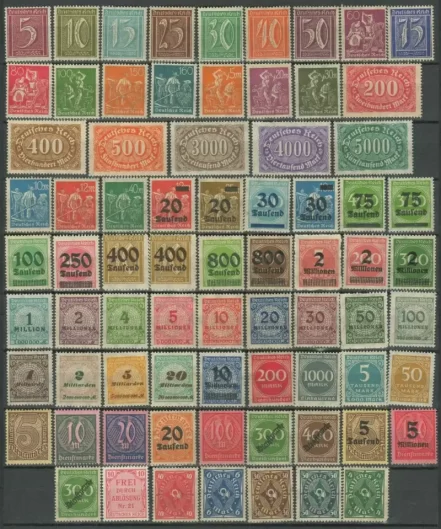

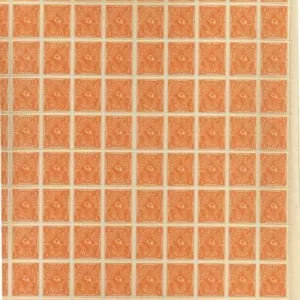
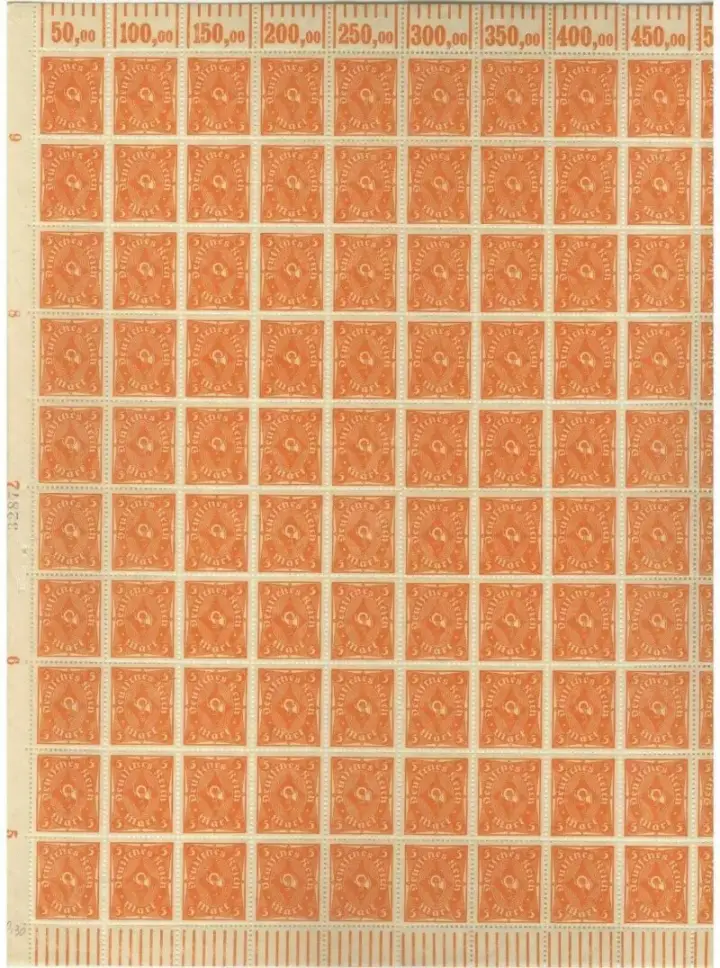
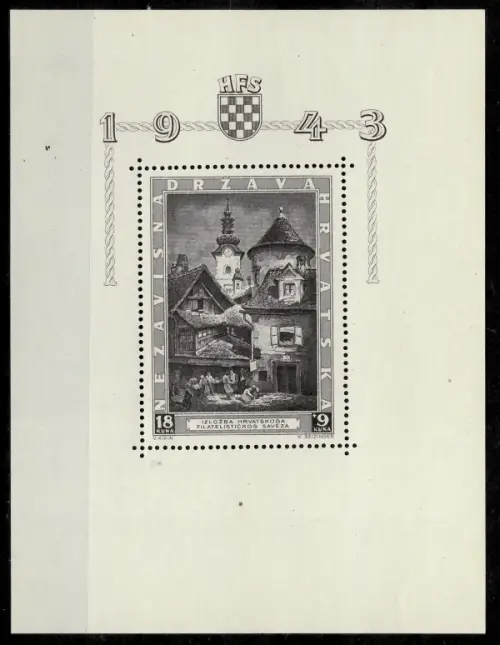

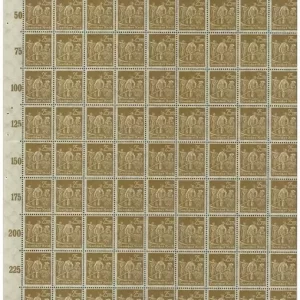
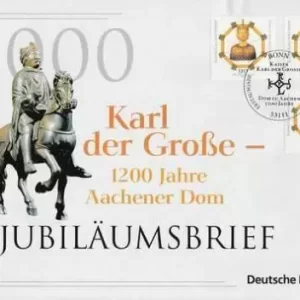
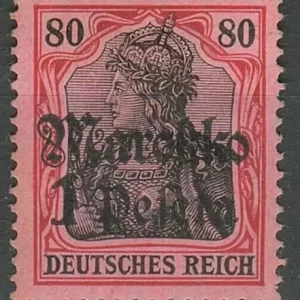
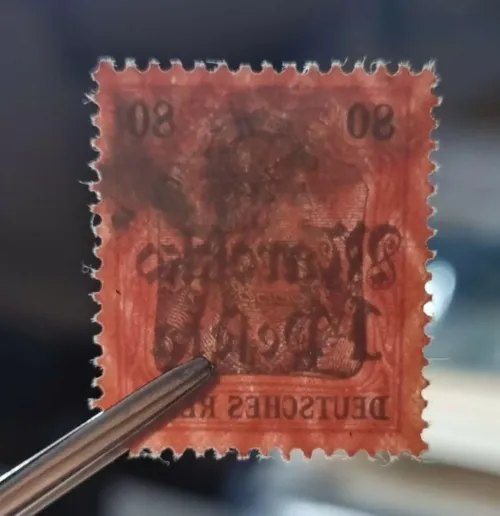
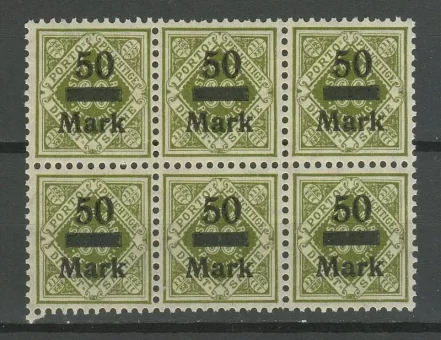

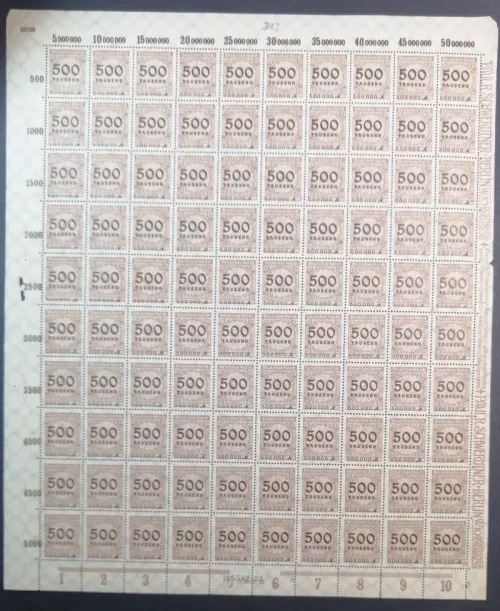
Reviews
There are no reviews yet.